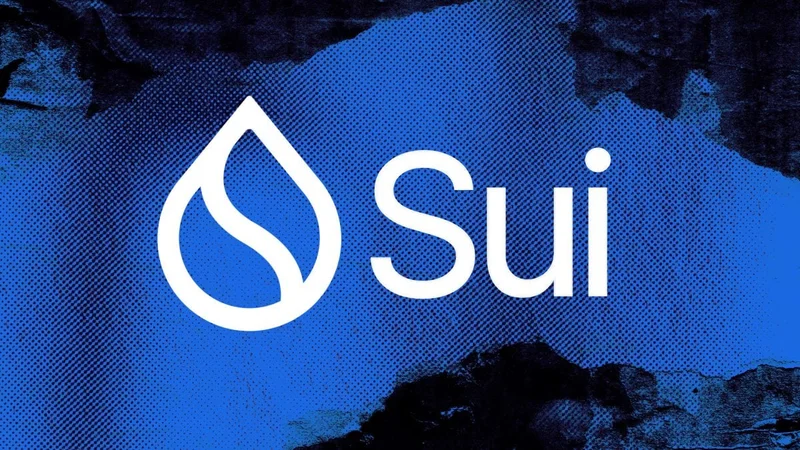Sui, the Layer 1 blockchain, is launching USDsui, a stablecoin pegged to the U.S. dollar. The announcement comes at a time when stablecoin adoption is supposedly on the rise, with traditional finance players like Standard Chartered and Visa sniffing around the space. But is this a strategic move or simply another attempt to chase the crypto hype train? I'm leaning toward the latter.
Stablecoin Saturation?
Sui's core developer, Mysten Labs, touts USDsui as a "foundational stablecoin" optimized for Sui's "high-performance architecture." The aim is interoperability across wallets, DeFi protocols, and applications built on the Sui network, with compatibility promised for Phantom, Hyperliquid, and MetaMask. Fine. But the stablecoin market isn't exactly a greenfield opportunity. Existing players like USDT and USDC already dominate, and newer entrants face an uphill battle to gain traction.
The claim of USDsui being "compliant-ready" under the GENIUS Act (the U.S. government's stablecoin framework) is, frankly, table stakes. Any stablecoin hoping to survive in the long run needs to adhere to regulatory guidelines. It's not a differentiator; it's the cost of entry. And let's be real, the GENIUS Act, while a step forward, is hardly a comprehensive solution, leaving plenty of room for future regulatory shifts and ambiguities.
Then there's the timing. While the press release highlights "growing adoption," the reality is more nuanced. Stablecoin supply has seen some growth, yes, but that doesn't necessarily translate to widespread usage outside of trading and speculation. How much of that "adoption" is genuine economic activity versus leveraged bets in the DeFi casino? That's the question no one seems to want to answer directly.
The "Safery" Curveball
And here's where things get interesting – and concerning. Amidst the stablecoin news, cybersecurity researchers uncovered a malicious Chrome extension called "Safery: Ethereum Wallet." This isn't directly related to USDsui, but it highlights a critical vulnerability in the broader crypto ecosystem: security.
"Safery" was designed to steal Ethereum wallet seed phrases by encoding them as fake Sui wallet addresses and sending micro-transactions (0.000001 SUI) from a threat actor-controlled wallet. (The technical elegance of this attack is, admittedly, impressive, even if the intent is malicious.) The attacker could then monitor the blockchain, decode the addresses, and drain victims' funds.

The fact that this extension slipped through the Chrome Web Store's vetting process, and was even updated as recently as November 12th (the date of one of the press releases!), speaks volumes about the challenges of securing crypto assets. Sure, the advice to "stick to trusted wallet extensions" is sound, but it's hardly reassuring when malicious actors are constantly finding new ways to exploit vulnerabilities. According to Fake Chrome Extension "Safery" Steals Ethereum Wallet Seed Phrases Using Sui Blockchain, the extension was actively updated until the day it was exposed.
I've looked at hundreds of these security reports, and the ingenuity of these attacks is constantly evolving. It's a cat-and-mouse game, and the users are the mice.
This "Safery" incident is a stark reminder that even with compliant stablecoins and high-performance blockchains, the underlying infrastructure remains vulnerable. All the regulatory frameworks in the world won't matter if users can't keep their assets safe.
The Real Question
So, what's the real play here? Is Sui genuinely trying to build a robust stablecoin ecosystem, or is this just a marketing ploy to attract more users and developers to its platform?
Adeniyi Abiodun, co-founder at Mysten Labs, claims that USDsui "adds another crucial piece of infrastructure" and "gives developers and users a trusted digital dollar." But is it really "crucial," or is it just another me-too product in a crowded market? Sui launching USDsui stablecoin via Bridge amid growing adoption confirms that the launch is happening via the "Bridge" platform.
I suspect it's the latter. USDsui might find some adoption within the Sui ecosystem, but it's unlikely to challenge the dominance of established stablecoins. The real value, if any, will be in driving traffic to the Sui blockchain and increasing its overall visibility.
Another Crypto Echo
Sui's stablecoin launch feels less like a strategic innovation and more like a desperate attempt to stay relevant in a rapidly evolving market. The security vulnerabilities highlighted by the "Safery" attack only underscore the challenges facing the entire crypto space. Until the industry can address these fundamental issues, stablecoins will remain a niche product with limited real-world impact.
